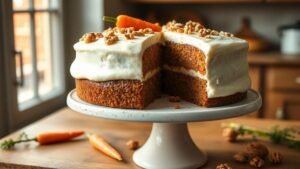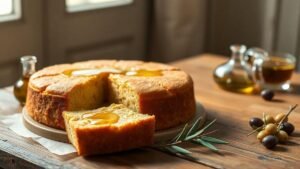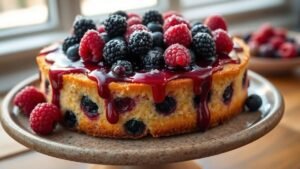When you’re just starting out in baking, choosing the right cake pan can make all the difference. The wrong pan can cause uneven baking, sticking, or even collapsed cakes—while the right one helps your cake bake evenly, release easily, and look great.
In this article, we’ll walk you through the best types of cake pans for beginner bakers, what materials to look for, sizes to start with, and tips to make your first bakes a success.
Why the Right Cake Pan Matters
- Ensures even baking and proper rising
- Prevents sticking or burning
- Affects texture and shape of the cake
- Makes unmolding and decorating easier
- Helps beginners build confidence and consistency
1. 8-Inch or 9-Inch Round Cake Pan
This is the most versatile and beginner-friendly pan size.
- Ideal for vanilla, chocolate, sponge, or fruit cakes
- Great for single-layer or stackable cakes
- Easy to find recipes made specifically for this size
- Tip: Buy two if you want to make layered cakes
Material recommendation: Nonstick aluminum or stainless steel
2. Loaf Pan (8.5″ x 4.5″ or 9″ x 5″)
Perfect for banana bread, pound cake, or beginner sponge cakes.
- No layering required
- Easy to handle and bake evenly
- Excellent for tea cakes or simple snacks
Material recommendation: Nonstick metal with a light color (dark pans bake faster!)
3. Square Pan (8″x8″ or 9″x9″)
Great for brownies, snack cakes, or tray-style cakes.
- Even shape for clean slicing
- Simple to store and use
- Often used in beginner recipes
Best for: Cakes with toppings like streusel or fruit
4. Bundt Pan (Optional for Beginners)
Adds flair to a simple recipe—but stick with a basic design at first.
- Unique shapes and defined ridges
- No need for frosting—just glaze or dust with powdered sugar
- Must grease thoroughly!
Avoid complex patterns until you’re comfortable with releasing cakes
5. Cupcake or Muffin Tin
Perfect for beginner bakers, especially kids or small batches.
- Fast baking time
- No slicing required
- Great for trying different flavors in one go
Use paper liners for easy cleanup
Bonus: Springform Pan
A good choice if you plan to make cheesecakes or delicate cakes.
- Removable sides for easier release
- Ideal for fragile or layered cakes
But: Slightly more advanced—use when you’re confident with baking basics.
What Material Should You Choose?
- Aluminum – Lightweight, heats evenly, widely used by professionals
- Nonstick – Beginner-friendly, but may require gentle utensils
- Glass – Heats slowly; best for casseroles, not cakes
- Silicone – Flexible and nonstick, but can bake unevenly if unsupported
Pro tip: Avoid super dark-colored pans at first—they absorb more heat and can brown your cake too quickly.
How Many Pans Do You Need to Start?
You can begin baking with just 2 pans:
- One 8″ or 9″ round pan
- One loaf or square pan
These two cover 90% of beginner recipes and are perfect for learning techniques.
Tips to Make the Most of Your Cake Pans
- Always grease and flour the pan—even nonstick ones
- Line with parchment paper for clean removal
- Avoid metal utensils on nonstick surfaces
- Don’t overfill—only fill up to ¾ full
- Cool cake in pan for 10 minutes before removing
Where to Buy Quality Cake Pans
You can find reliable pans at:
- Kitchenware stores (Wilton, Nordic Ware, USA Pan, etc.)
- Online marketplaces like Amazon
- Budget options at department or home stores
Stick with reputable brands that list safe materials and oven-safe temperatures.
Start with the Right Tools and Bake with Confidence
Choosing the right cake pan is a simple but powerful first step in your baking journey. With the correct size, shape, and material, you’ll get better results and more enjoyable experiences—plus beautiful cakes to share! Ready to stock your kitchen? Grab an 8-inch round and a loaf pan, and let the baking begin!






